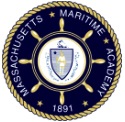EN-1112
Engineering Systems and Safety
Course Description
This course will teach students the fundamental engineering concepts related to the steam and water cycle and steam generation. The students will also learn about various primary and auxiliary engineering systems. The laboratory familiarizes the students with the safe operation of the engine room and engineering systems on board the training ship and provides students with basic first aid and occupational safety certification. [Lab time required]
Entrance Requirements
None
Learning Objectives
Demonstrate knowledge and understanding of the following STCW elements:
- AB-D-C2.1 Working in enclosed spaces
- AB-D-C2.1 Permit to work systems
- AB-D-C2.1 Lifting techniques and methods of preventing back injury
- AB-D-C2.1 Electrical safety
- AB-D-C2.1 Mechanical safety
- AB-D-C2.1 Chemical and biohazard safety
- AB-D-C2.1 Personal safety equipment
- AB-E-A8.1 Safe operation of hoists and lifting equipment
- AB-E-A9.1 Safe use and operation of electrical equipment
- AB-E-A9.1 Safety precautions before commencing work or repair
- AB-E-A9.1 Electrical isolation procedures
- AB-E-A9.1 Electrical emergency procedures
- AB-E-A9.2 Knowledge of the causes of electric shock
- AB-E-A9.2 Precautions to be observed to prevent shock
- AB-E-C4.1 Electrical safety
- AB-E-C4.1 Lockout/tag-out
- AB-E-C4.1 Mechanical safety
- AB-E-C4.1 Permit to work systems
- AB-E-C4.1 Working in enclosed spaces
- AB-E-C4.1 Lifting techniques and methods of preventing back injury
- AB-E-C4.1 Chemical and biohazard safety
- AB-E-C4.1 Personal safety equipment
- OICEW-A4.1 Characteristics of lubricating oil systems
- OICEW-A4.1 Characteristics of fuel oil systems
- OICEW-A4.1 Characteristics of cooling systems
- OICEW-C1.5 Safety measures to be taken to ensure a safe working environment
- OICEW-C2.1 Safety measures to be taken for repair and maintenance
- OICEW-C2.1 Safe isolation of shipboard machinery and equipment before personnel are permitted to work
- OICEW-D8.4 Knowledge of personal safety
- OICNW-C8.4 Knowledge of personal safety
- PS-SR-X3.1 Importance of adhering to safe working practices at all times
- PS-SR-X3.2 Safety and protective devices available to protect against potential hazards aboard ship
- PS-SR-X3.3 Precautions to be taken prior to entering enclosed spaces
- PS-SR-X3.4 Familiarization with international measures concerning accident prevention and occupational health
- RFPEW-A1.3 Safe working practices as related to engine-room operations
- RFPEW-A3.2 Know escape routes from machinery spaces
- T-OPS-X3.2 protective clothing and equipment
Other Objectives
- Understanding of steam cycle component pressures temperatures and terminology
- Engine room watch keeping procedures
- Engine room safe working practices including lock-out-tag-out and confined space
- Engine room alarm and evacuation procedures and emergency equipment
- Basic maintenance of machinery and equipment
- Knowledge of personal safety and social responsibility
- Safe operation of boilers
- Fighting fires onboard ship
- Emergency equipment and emergency procedures
Syllabus
OSHA Lab
- Brief introduction to OSHA
- Electrical, general, safety related work practices 1910.331 - 335
- Lockout/Tagout Procedures 1910.147
- Personal Protective Equipment, Subpart I, 1910.132 - 138
- Respiratory Protection, 1910.134
- Hearing Protection, 1910.195
- Confined Spaces, 1910.146
- Hazard Communication 1910.1200 (Material Safety Data Sheets)
- Bloodborne Pathogens, 1910.1030
- Emergency Action Plans, Fire Prevention, from 1910 Subparts E and L
- Fall Protection – 1926.502 General, guardrails, fall arrest systems
- Hand and portable power tools, general, 1910 Subpart P
- Machine Guarding, general, 1910 Subpart O
